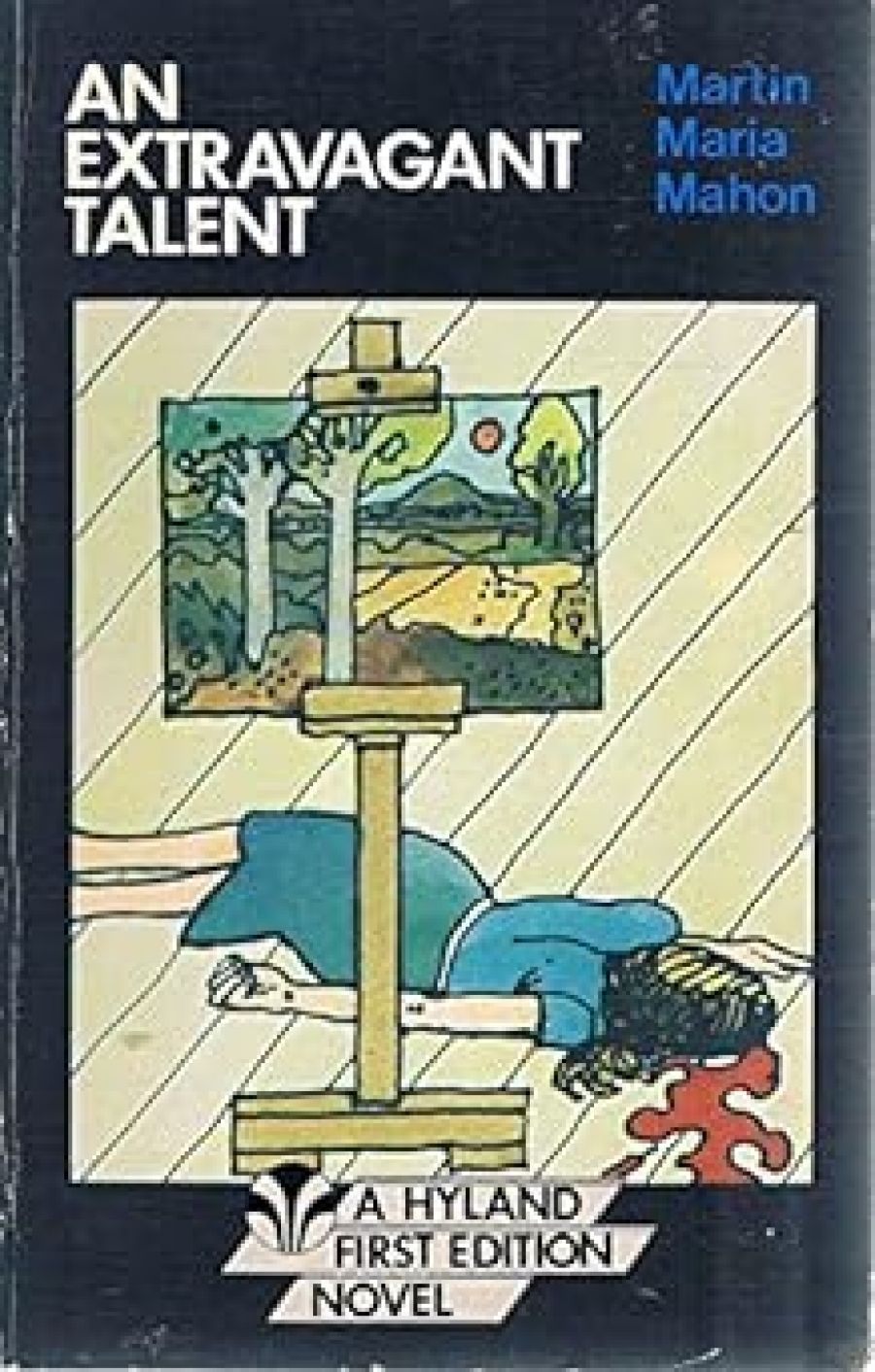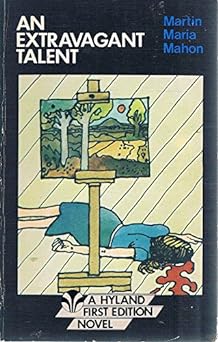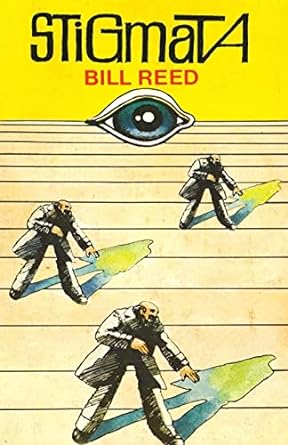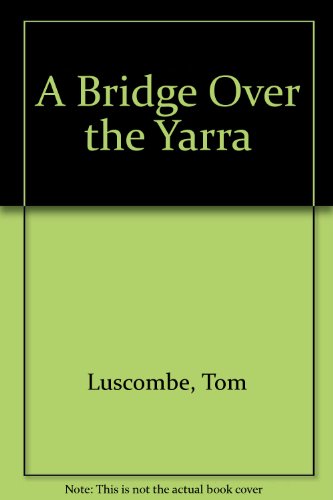
- Free Article: No
- Contents Category: Fiction
- Review Article: Yes
- Article Title: Talents Hardly Extravagant
- Online Only: No
- Custom Highlight Text:
The slump, it seems, has hit at last, the slump occasioned by the competition of television, films and the theatre have felt it for some time, but here it is being registered in literature. In its own way each of these three books represents an attempt to capture the popular imagination.
- Book 1 Title: An Extravagant Talent
- Book 1 Biblio: Hyland House, $9.95, 282 pp
- Book 1 Cover Small (400 x 600):

- Book 2 Title: Stigmata
- Book 2 Biblio: Hyland House, $15.00, $9.95 pb 213 pp
- Book 2 Cover Small (400 x 600):

- Book 3 Title: A Bridge Over the Yarra
- Book 3 Biblio: Hyland House, $9.95, 247 pp
- Book 3 Cover Small (400 x 600):

A Bridge Over the Yarra is altogether less exciting, quieter and inherently more honest in what it promises and delivers and is the equivalent of a well-researched, if slightly dull documentary. Its author, Tom Luscombe, a historian as well as a fiction writer, recreates the life in early Melbourne in the decade before the gold rushes in a way that combines information with interest. Quite apart from the story of the bridge, there are lively pictures of the never-ending quarrels between Catholics and Orange-men, hurling matches which arose out of talk and quarrels in pubs, glimpses into offices and homes, and historical figures like Fr. Geoghan, first priest of St. Francis Church, and Garryowen, the chronicler, brought alive. Books like this reflect a growing desire to take possession of the past, and those concerned with a more mature, more enduring sense of identity and looking for the pleasures of a story quietly but competently told will enjoy A Bridge Over the Yarra.
Stigmata is altogether more puzzling and equivocal. Bill Reed is the author of the extraordinary and to my mind unreadable Dogood, apparently an attempt to rewrite Finnegan’s Wake. Stigmata is also experimental in method and there is no question of the verisimilitude the other two novels rely on. Although in effect he is writing a detective novel, Reed deliberately breaks the taboos of that form, loading his story with metaphysical, even theological, speculation – about the meaning of human suffering, no less – and moving into the fantastic, even surreal, elements in everyday experience. His language, too, constantly calls attention to itself and is at times quite deliberately awful. What, for instance, is to be said of this: ‘At the steps to the kitchen verandah, both Miss Avery’s momentum and the threatening centrifugality of Frank’s dogtrot both combine finally to send her spinning to a neat collision, again, with the porch post’? Yet, to return to my initial point, of the three novels under review, this may be the only one to raise the stocks of the novel a few points in the current slump and this, despite the style and occasional longueurs of the story, especially in its last quarter.
Reed directs his novel into the area in which film and television are beaten hands down, setting out to make his readers work for their rewards, calling in their creativity. Instead of competing with television or film, he rejects the aesthetics of photography to highlight the aesthetics of intuition, primarily by means of the language which calls attention to itself, to strangeness rather than to familiarity, and thus to its roots in experience. At the same time, in general, he succeeds where most experimental writers fail in telling a story, a murder mystery which uses all the classical ingredients: a crime which is both puzzling and personal, the hit-and-run death of a little girl, daughter of a leading Jewish businessman; a detective who is also a puzzling and equivocal figure, in a sense less innocent than the man he is pursuing; and a background of vivid, often grotesque characters set in a world recognisably familiar, yet also disturbingly strange. The central section of the book in which, gathering up the clues, the story moves deftly and rapidly to a solution is quite masterful. After this, it is true, the trouble starts as the writer begins breaking the rules of the detective fiction game which have so far served him so well. This game celebrates the triumph of rationality but he moves into the metaphysical, even the mystical – two of his characters develop stigmata, thus becoming Christ-figures, and he quite explicitly explores the notion of the just man suffering for the sins of others. Dostoevsky may have been able to combine a murder mystery with theology in this way, but the society he wrote in was hotly metaphysical. Contemporary Australia is much cooler and more pragmatic. Similarly, the gallery of eccentrics, a father and son both rapists and murders, a persecuted hermit who suffers for their sins, an idiot boy guarded by his unmarried sister, the overwrought Jewish businessman and so on, challenges comparison with Faulkner, not to mention Patrick White. But somehow one senses that Reed’s passion is less pure – he seems at times less interested in what he has to say than in how to say it. It is a measure of the book’s interest, however, that such comparisons come to mind.
If one could agree with Matthew Arnold that high seriousness is the touchstone, then this would be a major work. As it is, I suspect that Mr Reed needs to affect the metaphysics’ less and honour the needs – which are not necessarily the same as the desires – of his readers more. Nonetheless, Stigmata represents a notable attempt to close the gap between the popular imagination and literature and television has nothing like it to offer.


Comments powered by CComment